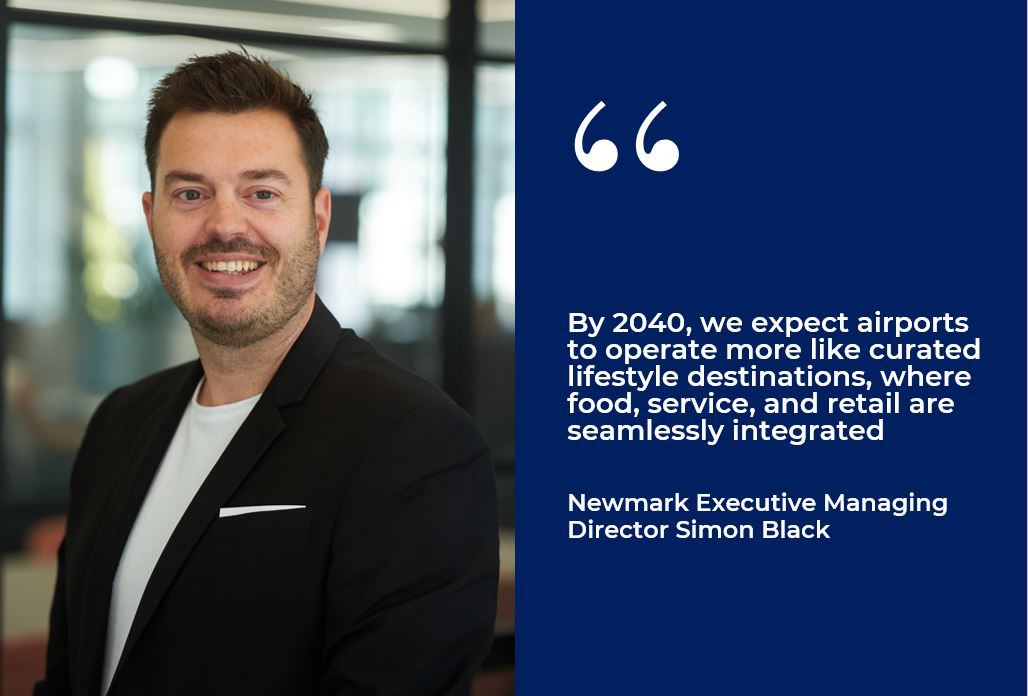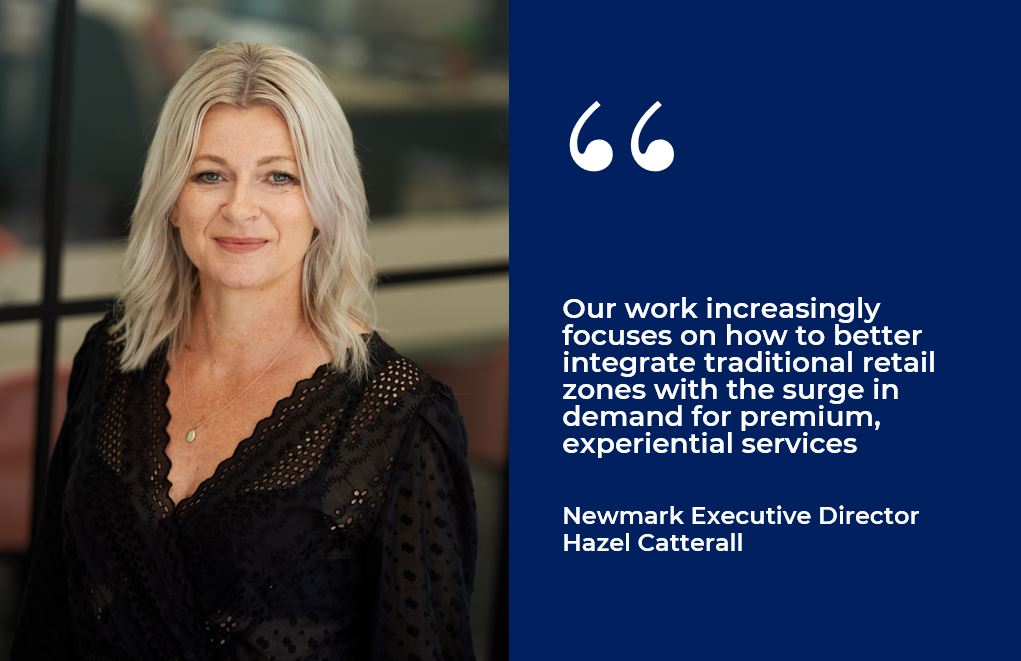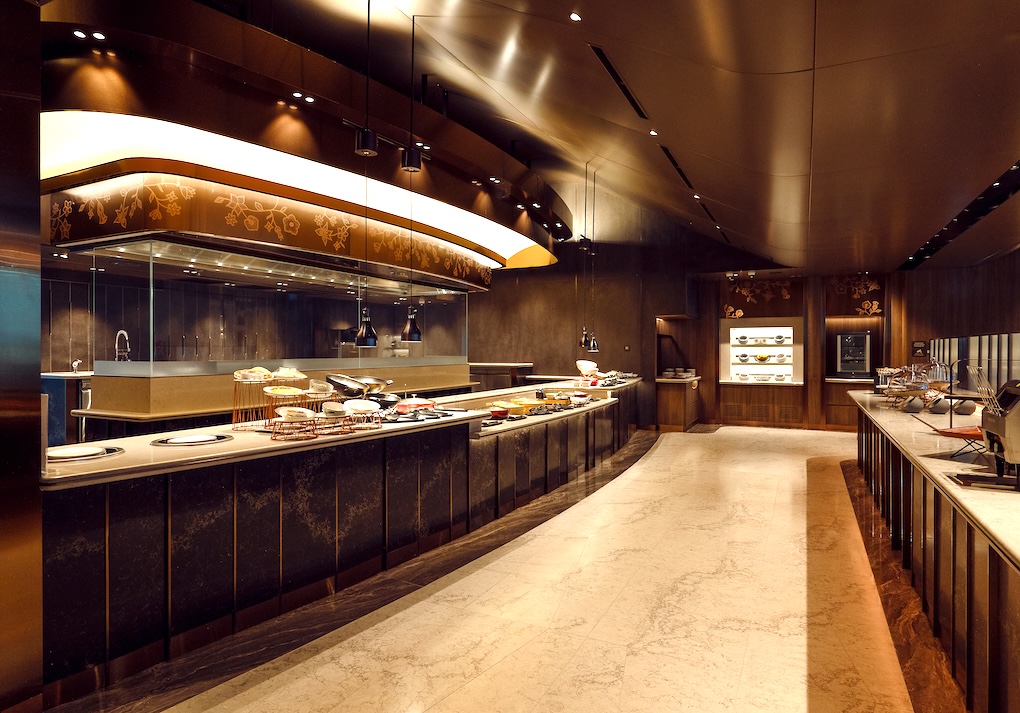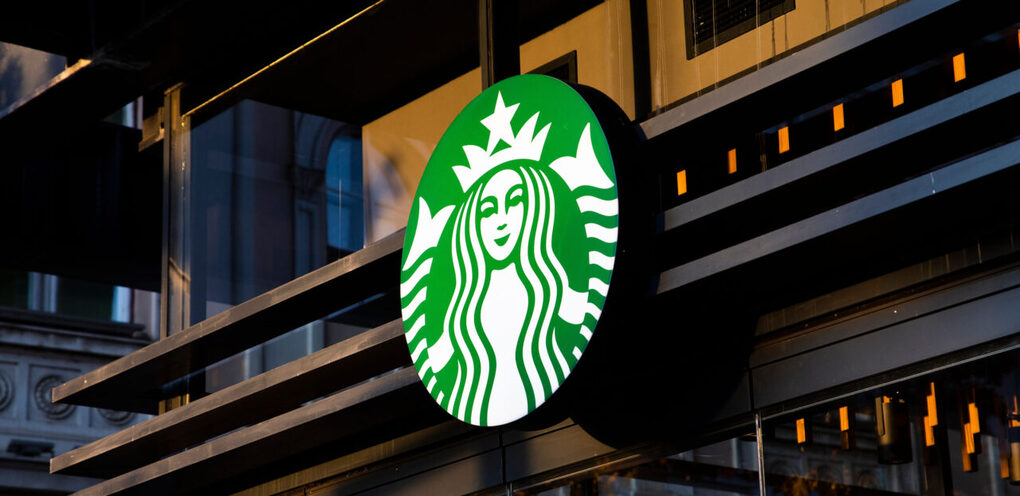Specialist real-estate-to-retail consultancy Newmark has released its most comprehensive annual airport retail study, covering the commercial landscape of more than 200 airports across Europe, the Middle East and Africa (EMEA).
The study analyses over 7,000 commercial offers across retail, duty-free, food & beverage (F&B) and service categories, mapping how airport spaces are evolving in response to shifting passenger behaviours and expectations.
Newmark’s 2025 Airport Retail Study, which features airports with annual passenger volumes from 1 million to over 85 million, highlights a fundamental distinction between airport and domestic retail models.
More than 70% of all airport commercial offers are now operated by specialist travel retailers, not directly by brands or F&B concept owners, reinforcing the critical role of operators in shaping and managing the passenger experience.

Newmark 2025 Airport Retail Study Snapshots
|
Food & beverage now represents 46% of all airport commercial offers and 44% of airside commercial space, up from 36% in 2016.
Newmark projects this share could reach 50% by 2030, as airports continue to pivot toward more experiential, lifestyle-driven formats that align with evolving consumer preferences and dwell-time behaviors.

“The evolution of airport retailing across EMEA is accelerating and it’s driven by a more discerning and experience-hungry passenger,” said Newmark Executive Managing Director Simon Black.

“By 2040, we expect airports to operate more like curated lifestyle destinations, where food, service and retail are seamlessly integrated. We’ve already seen this transformation in high streets and shopping centres. For airports, it means rethinking legacy space allocations and investing in adaptable, high-impact offers that resonate with the new consumer.”

Food, glorious food
F&B density by airport varies widely, the study points out.
With nearly 84 million annual passengers, London Heathrow ranks as the second-busiest airport in EMEA yet allocates just 24% of its commercial units to food & beverage, the lowest among the region’s top ten airports in breadth and F&B choices per passenger, the study claims.
[Update: Asked to comment by The Moodie Davitt Report in the interest of balance, Heathrow Retail Director Fraser Brown told us: “We dispute the data as it’s not about unit numbers but unit square metres and F&B units are on average bigger than retail ones.
“Secondly, Heathrow believes it’s about productivity in each of our units. With the model of direct operation in most cases, it’s not just about space allocated but quality of offer and operation to ensure we satisfy a large number of passengers on a small footprint. We would point to our service scores as a recognition of that.”]
This, Newmark observes, reflects the challenges of operating in a highly space-constrained environment, where infrastructure limitations and competing service priorities restrict expansion of key passenger-facing categories such as F&B.
“Recent openings, including M&S, YO! Sushi To Go, Wafflemeister, and the soon to open Five Guys signal Heathrow’s intent to address these gaps and capture more value from evolving traveller expectations around food and convenience,” Newmark comments.
In contrast, Istanbul Airport, the third-busiest EMEA airports, leads across multiple F&B metrics, the study concludes. The main Turkish gateway allocates 44% of its commercial units to F&B concepts, offers the highest number of total F&B outlets, and delivers the greatest choice of F&B propositions per passenger.

This performance reflects a deliberate strategy to position F&B as a central pillar of the passenger experience in line with the trend toward fast casual-eating experiences, Newmark says.
Coffee perks up, bakeries bring in the dough
The report also underscores the rising popularity of coffee and bakery concepts, which now account for 50% of all F&B offers across EMEA airports – “a dramatic evolution from their former low-priority status”.
Of these, 85% are operated by specialist (generic) travel retailers, underscoring their growing role in meeting traveller demand for familiar, lifestyle-driven choices.
Grab & Go and Fast Casual formats follow closely, accounting for 30% of F&B outlets, reflecting a broader shift toward speed, convenience and mobility over traditional dining.
The F&B category leads all airport retail segments in operator-led concessions, with 82% of offers managed by specialist travel retail operators, compared to just 50% in Fashion & Accessories, where brands are increasingly taking direct control of their retail presence.
The report also reveals a highly concentrated F&B landscape, where over 60% of units across EMEA are managed by just three travel retail powerhouses – SSP, Avolta and Lagardère Travel Retail.

Newmark Senior Travel Retail Analyst Harleen Mundi said: “Airports are increasingly dedicating more space to food & beverage. Upcoming airside marketplaces at Frankfurt T3, Vienna, Copenhagen and Stansted are significantly expanding both the size and share of F&B offering compared to their current terminal layouts.”
As passenger preferences shift toward experiences over products, airports are rethinking how they allocate commercial space, the study points out. Newmark’s 2025 Airport Retail Study highlights a clear trend: travellers are becoming more selective and price-conscious, spending less on traditional retail and more on social, sensory and hospitality-led experiences.
Newmark Executive Director Hazel Catterall said: “We’re seeing growing demand from airports seeking lounge strategy support. Current lounge footprints are struggling to keep up with rising demand, and we expect this growth to continue over the next decade.
“Our work increasingly focuses on how to better integrate traditional retail zones with the surge in demand for premium, experiential services.”
Simon Black added, “We’re excited about the future of airport retail marketplaces but the challenge lies in driving meaningful transformation within an industry anchored in legacy systems and long-term models that often resist change.
“As consumer expectations evolve faster than ever, our ability to adapt must move even faster. The urgency to innovate can no longer be constrained by tradition.” ✈
Contact: Newmark Executive Managing Director Simon Black: Simon.Black@nmrk.com












